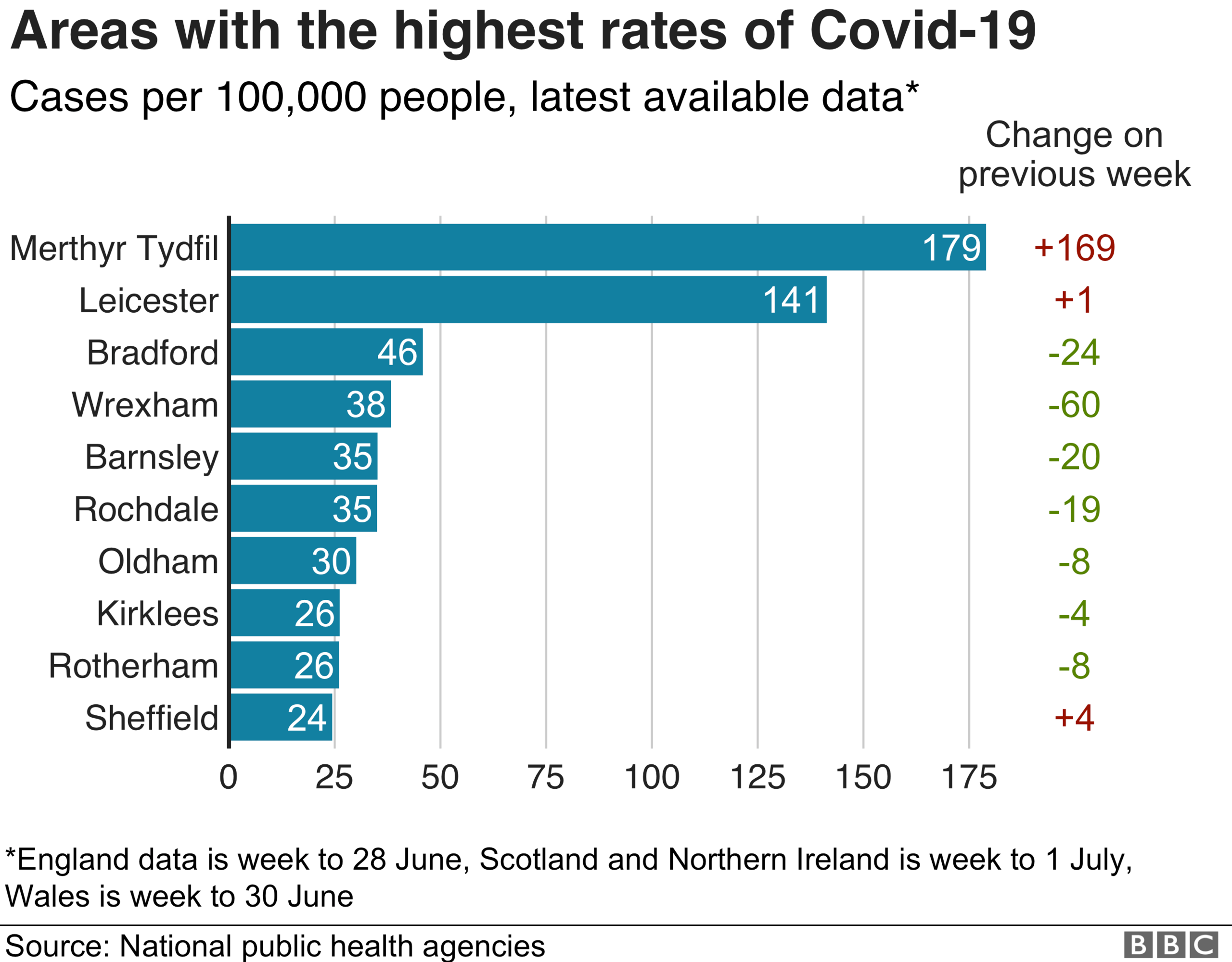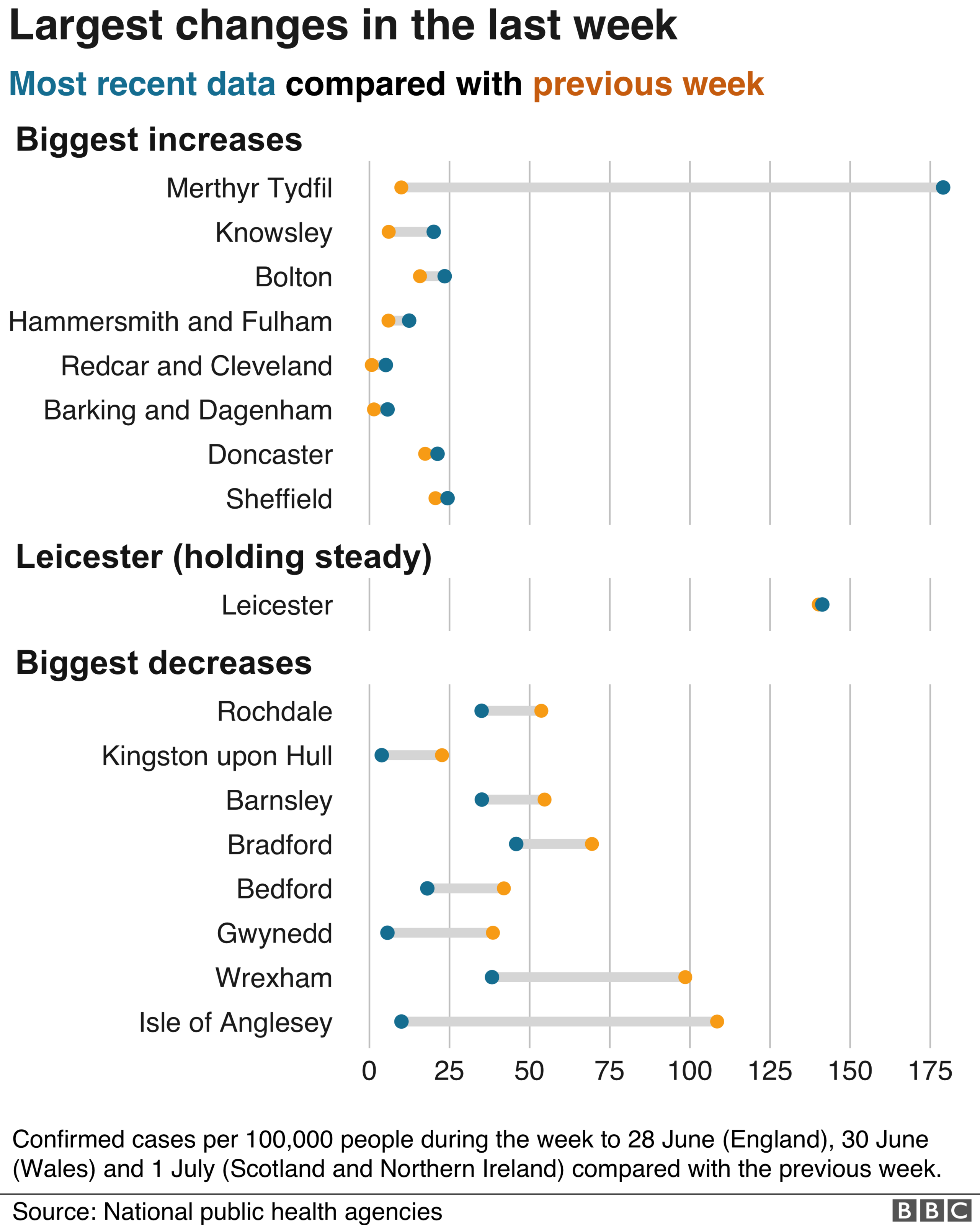Coronavirus lockdowns: Where is next after Leicester?
- Published

People in Leicester have been told to stay at home since Monday
As half a million people in Leicester return to lockdown, data published this week shows who might be next.
For the first time, we can look at the trends in confirmed infections in every local authority in the UK.
Public health officials are monitoring more concentrated outbreaks in smaller areas, like the one at a food processing plant in Merthyr Tydfil.
But government sources suggest that lockdowns on the scale of Leicester's are "not imminent in other areas".
Leicester and Merthyr stand alone
The figures for the last week in June show there were 141 infections per 100,000 people in Leicester, similar to the previous week.
That is the highest of any local authority area in the UK with the exception of Merthyr Tydfil.

Almost all of the other areas in the top 10, places like Bradford, Barnsley and Rochdale, have seen infection rates fall in the last week.
And the infection rates in these areas are only a third of Leicester's.
In fact, across the country, most places saw fewer than 10 positive tests per 100,000 people in the most recent week's data.
That's much less than a tenth of Leicester's figures.

The cluster of dark blue in the north of England on this map are places like Bradford and Rochdale, where the infection rates are in the top 10, but still far below Leicester and, in most cases, falling.
Nowhere in Northern Ireland or Scotland saw a rate of infections above five positive tests per 100,000 people.
The biggest movers
Merthyr again stands out as the area that has seen the biggest increase in infection rates.
After that, Knowsley, Bolton and then Hammersmith and Fulham have seen the largest rises in infection rates, but these areas still saw fewer than 25 infections per 100,000 people in the week to 28 June.

Leicester's infection rate has stayed stubbornly high across the last two weeks for which we have data.
The biggest falls are areas in Wales that, like Merthyr, have seen outbreaks in food-processing plants in recent weeks.
After Wrexham and Anglesey, the places with the next largest falls include Barnsley, Rochdale and Bradford, part of that dark blue clump in northern England.
Why is Merthyr different?
On the face of the numbers, Merthyr looks like the most infectious part of the UK. It saw the highest rate of infections in the last week of data and the biggest rise.
But government officials are more worried about Leicester.
We know what caused the spike in Merthyr Tydfil: an outbreak in a food-processing plant.
In very local outbreaks like those, officials might test everyone in a plant, leading to a sudden spike in confirmed cases that falls away over the following weeks.
Of the 108 positive tests in Merthyr in that week, 104 were on one day, with no more than a single infection reported on any other day.
Public Health Wales told the BBC that, at the moment, it sees "no evidence of a big surge of infections in the wider community in Merthyr".
There will continue to be very local outbreaks, like the 11 cases in Dumfries and Galloway that saw mobile testing vans sent to two factories, and the extension of a five-mile travel limit in seven postcodes.
But the infections may not show a spike when you look across a whole local authority.
So, at the moment, the data doesn't suggest that anywhere the size of a full local authority is close to Leicester.